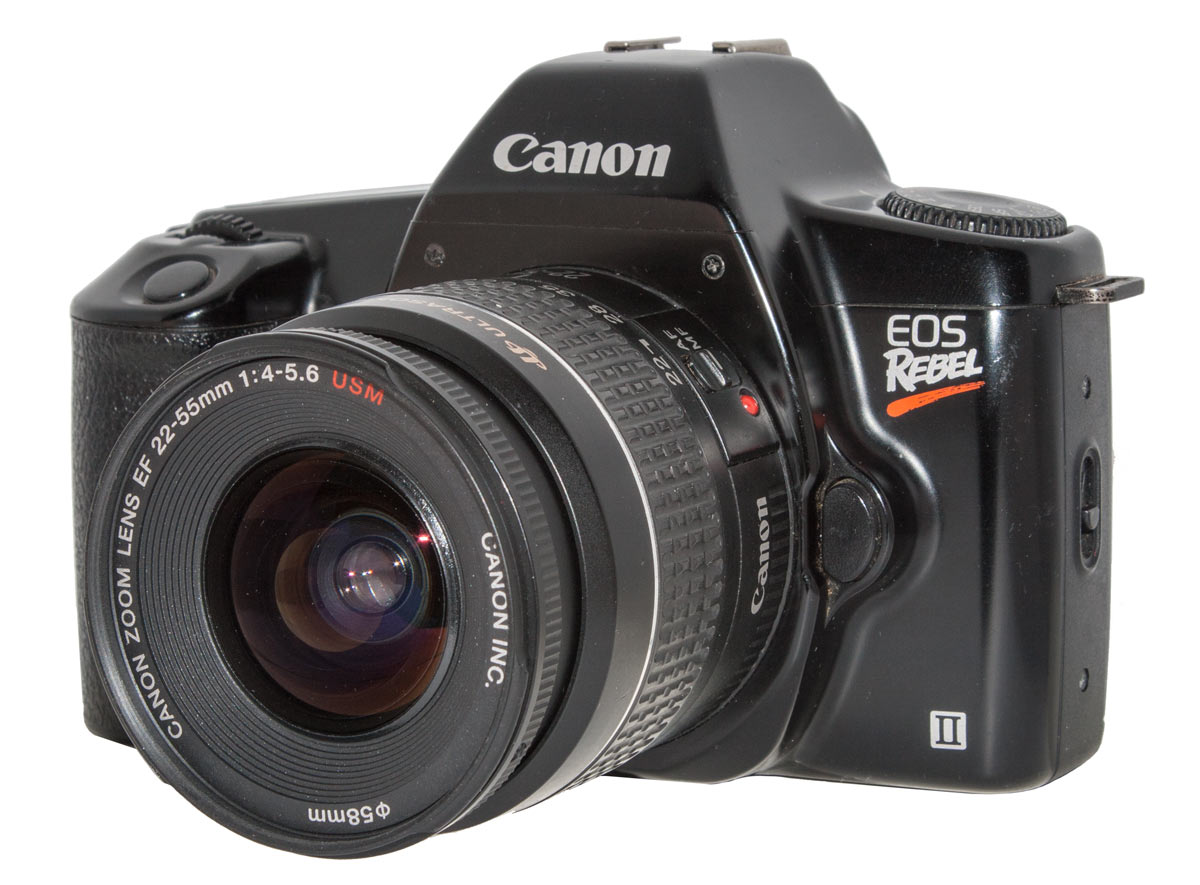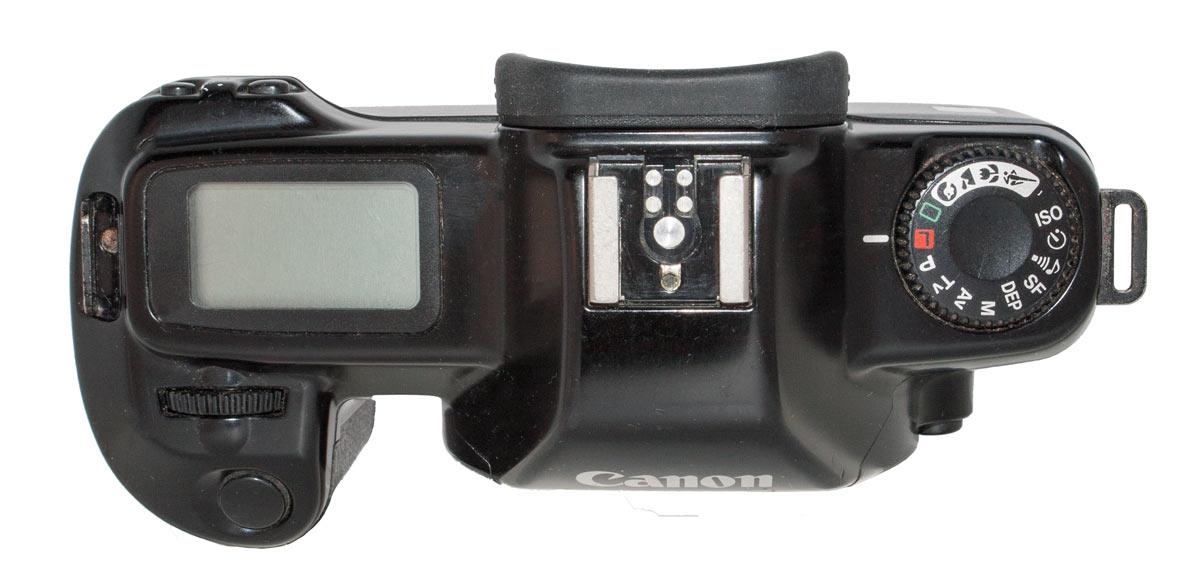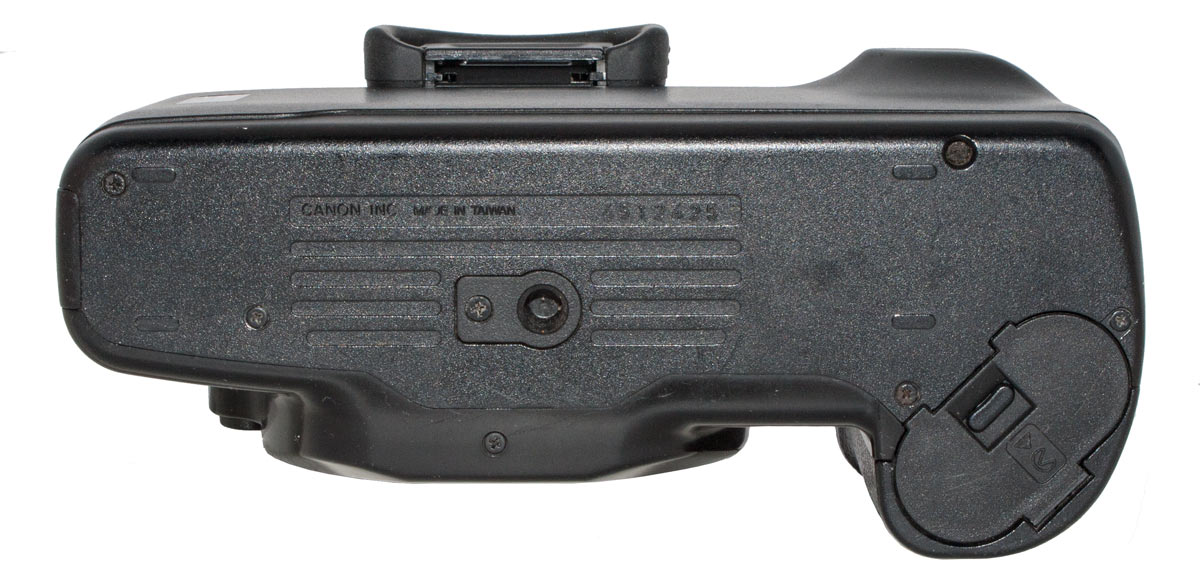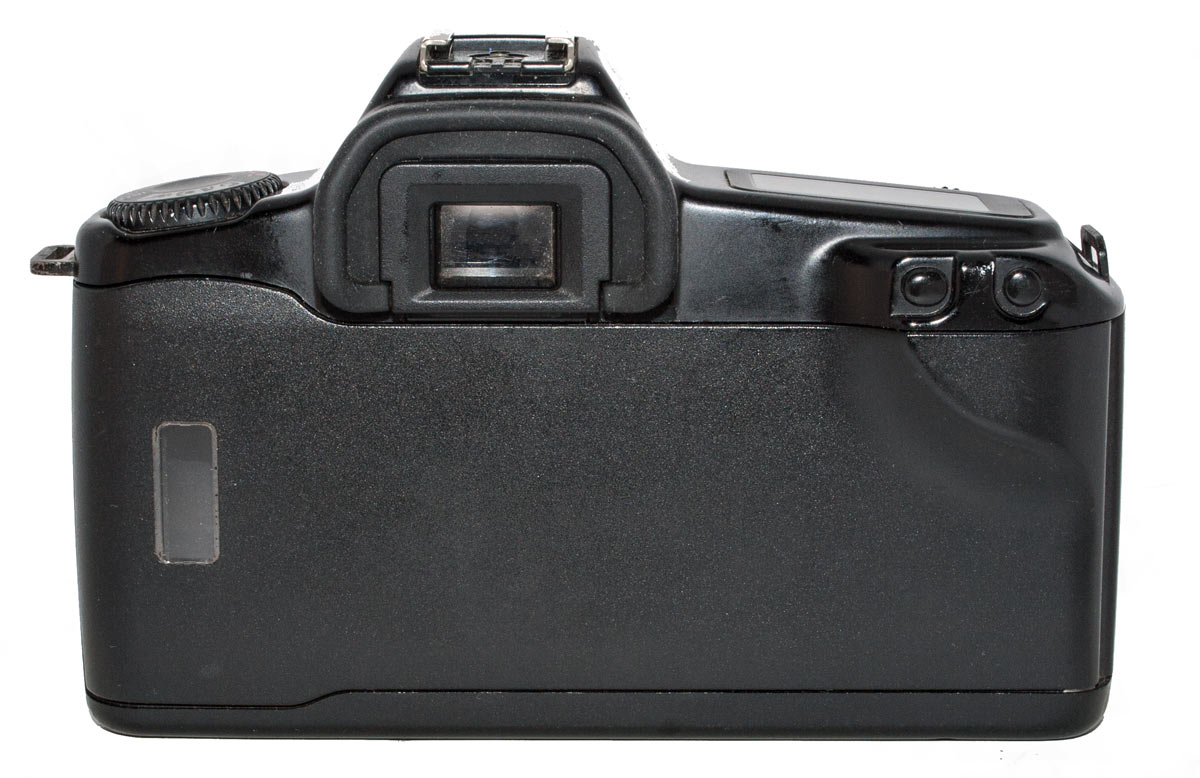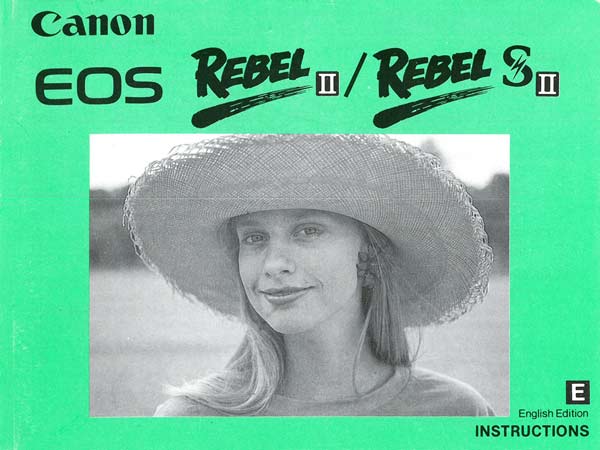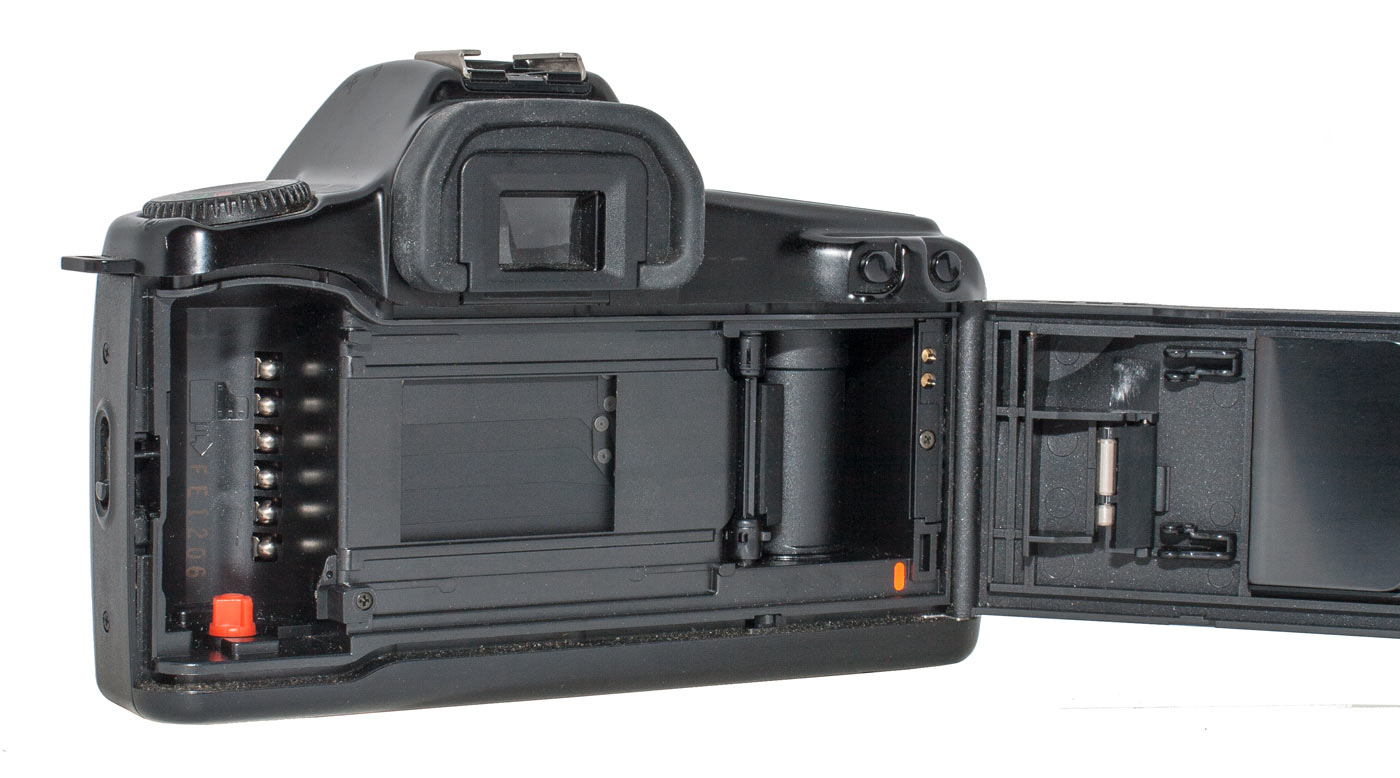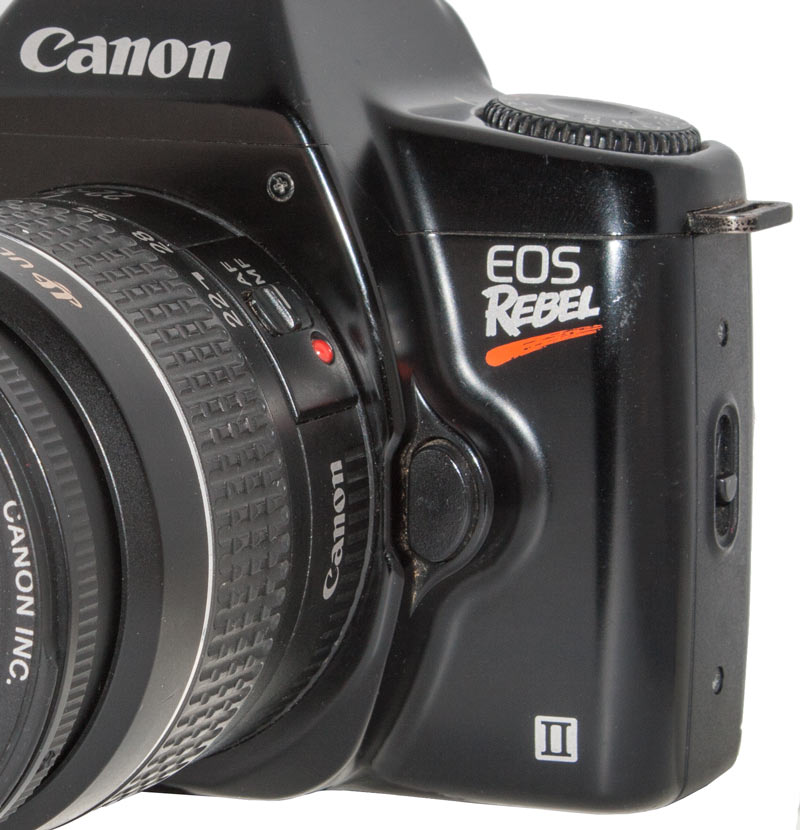
Except for the name on the front of the camera this model looks the same as the original Rebel.
The EOS lens mount is still plastic to keep the camera light. Although many of us have an aversion to plastic, it is probably as durable as metal and certainly lighter.
EOS Rebel II
The First Rebel Upgrade
The Canon EOS Rebel II was introduced in April of 1992. But when we talk about the Rebel II we are actually talking about a family of cameras, some with a flash and some without. But all are essentially identical.
Just as with the original Rebel the Rebel II is a camera without a built in flash. The model with the flash was the Rebel S II. And, of course, it was available with a Date Back so there is the Rebel S II QD.
In Europe, in the same order, these were the 1000 N (“N” presumably for New), 1000 FN, and the 1000 FN QD. In the Japanese home market there was the 1000 S which was the Rebel S II, the 1000 S QD and the 1000 S QD-P.
I had difficulty researching this group of cameras. The Canon museum is not much help and information on the Internet is all over the place. However, what follows is what I have found.
Since we are dealing with the first upgrade to the Canon Rebel film camera we should go back and have another look at the original Rebel. That, too, was a group of cameras.
If we were to organize these cameras into a table they would be easier to visualize.
We have a Newsletter
There is a Newsletter for thecanoncollector.com to keep you up to date on what we are posting. Try it!
A good way to distinguish this model is to look for the SF setting on the Command Dial. It is not on the original Rebel.
The bottom of this model and the original holds no clues as to which you are looking at.
The backs of this and the previous model are identical. Of course when we get into the command backs the differences become apparent.
| Date | US | Europe/Int | Japan |
| 1990 | Rebel | EOS 1000 | |
| 1990 | Rebel S | EOS 1000 F | |
| 1900 | Rebel S QD | EOS 1000 F QD | EOS 1000 QD/QD-P |
| 1992 | Rebel II | EOS 1000 N | EOS 1000 S |
| 1992 | Rebel S II | EOS 1000 FN | EOS 1000 S QD |
| 1992 | Rebel II QD | EOS 1000 FN QD | EOS 1000 S QD-P |
To review, “N” means the model is new or improved, or both. “F” or “S” means the camera has a built in flash. “QD” means the camera has a back that will imprint the date on the edge of the image. “P” refers to a camera that takes a panorama picture. This is a bit of a fraud because it simply shaves off some of the image area from the top and bottom of the frame and, in my opinion, it is never good to lose perfectly good pixels. You can trim to panorama shape in post if you want to but you should retain the option.
The Rebel II looks, outwardly, like the original Rebel. If you open the Manuals side by side at the specifications page you will see little difference. The top shutter speed is up from 1/1000th to 1/2000th. And apparently the focus is faster by about 50%.
Internally, there are no changes of note. The original and this model look the same.
I see references as well to a quieter film advance and rewind. Apparently the flash is stronger in the flash models.
An unusual feature is a soft focus setting which I really have to try. This would normally be for portraits. The camera takes a picture but it then kicks the lens slightly out of focus and snaps a second image on top of the first: a double exposure. This is the “SF” setting on the Command Dial.
The camera usually came with a 35 – 80mm f/4-5.6 kit zoom lens.
For details on using any of these cameras you should use the Manual on the left. It will tell you all you need to know.
This website is the work of R. Flynn Marr who is solely responsible for its contents which are subject to his claim of copyright. User Manuals, Brochures and Advertising Materials of Canon and other manufacturers available on this site are subject to the copyright claims and are the property of Canon and other manufacturers and they are offered here for personal use only.

